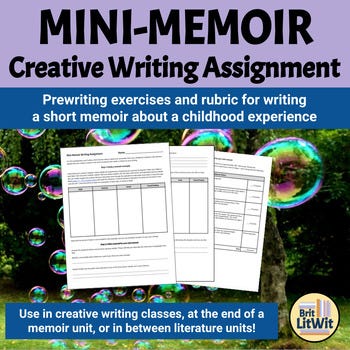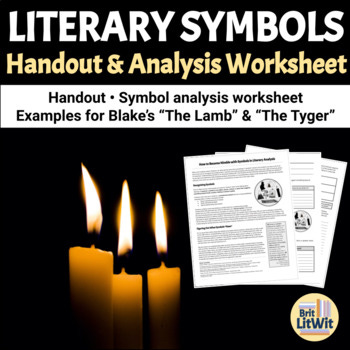What to do in English class before winter break
3 ideas for when there's no way you're starting a new unit
You know who had it made? Teachers in the 90s. Back then, if there was any kind of vibe shift due to an upcoming holiday or vacation (or standardized test, dreary weather, or Friday) the answer to “What is my lesson plan for today?” was simple: wheel that TV cart down from the library and pop a movie in the VCR, and voilà, the madding crowds would be subdued. What more could you expect at distracted, low-motivation times like those? Aligning assignments with academic standards, you say? Keeping up the rigor until the break? Bracing for a principal walk-through? What kind of dystopian educational system do you come from?!
Ha. Okay, so here in the 21st century we all know that if you finish a unit 1-3 days before winter break, you’re not going to launch into a new one, but your plans for the remaining periods still need to have substance. So if you’re not the type of English teacher to stretch out a unit with riot-inciting busywork (or get busted by your principal for showing the full feature film version of the text you just finished), here are three ideas for assignments that can keep the learning going while simultaneously winding things down.
Read a seasonally-appropriate Sherlock Holmes story
Sir Arthur Conan Doyle’s Sherlock Holmes stories are a nice asset for English teachers to keep on hand because they mysteries are cleverly plotted but not difficult to comprehend. Also, most students will have some prior knowledge of the character of Sherlock Holmes, so you don’t need to provide too much background information if you’re short on time. Another bonus: the stories are in the public domain.
The story “The Adventure of the Blue Carbuncle” also happens to take place on December 27th, so it’s a perfect choice if you think it would work well in your pre-winter break schedule to teach a short story. The plot starts with Holmes investigating why a man got attacked on the street while carrying a goose he bought for Christmas dinner and it eventually leads Holmes to identify a jewel thief. In the meantime, students will enjoy keeping up with Holmes’ deductions about the suspects and his clever methods for getting information. Plus, Doyle’s descriptions of 1890s London in wintertime are vivid enough to make everyone feel transported.
Related resources:
"The Adventure of the Blue Carbuncle" Resources: My resources include reading questions, a deduction log worksheet, and a multiple-choice quiz.
Story text and audio recording: The story is available in the public domain on Wikisource along with a 41-minute audio recording read by a man with a pleasant British accent. Consider playing a little bit of the recording at the start to get students oriented…and use more of it if they’re really dragging before break.
Write mini-memoirs
Mini-memoirs are an opportunity to get students writing (and check off the Common Core standards for constructing narratives) in a way that will feel more relaxed than other assignments. My resource keeps it pretty simple: students read two pages from Frank McCourt’s childhood memoir Angela’s Ashes and identify how McCourt loads it with sensory details to make it easy for readers to envision the situation. Then, students complete a prewriting sheet to collect memories about a place they remember from childhood. They use those details to compose a mini-memoir of 300-500 words.
Although it’s a writing assignment, it goes quickly—and it’s super flexible in terms of topic and the amount of time you spend on it. You can let students know that they’re welcome to write about holidays or winter (which can make the topic choice easier for some), but don’t require it. Students can start it in class and finish it for homework or do the whole thing in class over a couple of days if you need to fill the time. If you need to extend it even more and/or want to keep things light at the end of the week before break, add in a peer editing component and make time to share out strong descriptions with the whole class.
This resource also includes a rubric that makes the expectations clear for focus, sensory details, and style. It’ll also make it easy for you to grade!
Analyze symbols
Do you have just one period or so that you need to fill before break? Consider taking a closer look at symbols from the texts you’ve already studied this year so students can develop more personal takeaways. It’s a nice way to seal off the learning before you go away for awhile!
I created a resource that gets students to make connections from literary symbols to emotions, adjectives, places, cultural/societal experiences, and other literary works and films they know. (It doesn’t matter if they read what SparkNotes or Shmoop have to say about the symbols because this is all about making personal connections.) They identify examples of how the author develops the symbol throughout the text and eventually craft a statement about the symbol’s purpose. When students align their experiences and meanings with literary symbols, they can find more significance in required reading than just as a means for acquiring points that become grades! This kind of recap also primes them to recognize and consider symbols they encounter in future reading assignments.
For efficiency and variety, consider pre-selecting the symbols from the texts you’ve read and jigsaw them amongst the students. You might even include texts they studied in previous years of English if you think you need more material. Consider extending the assignment by having students research and analyze symbols in their favorite films.
So those are my three ideas! If you find yourself with an odd amount of instructional time to fill before winter break, consider reading a seasonally appropriate short story like “The Adventure of the Blue Carbuncle,” having students write short narratives, or going deeper with texts you’ve already studied by analyzing their symbols. Hang in there and take care of yourself over the break!





